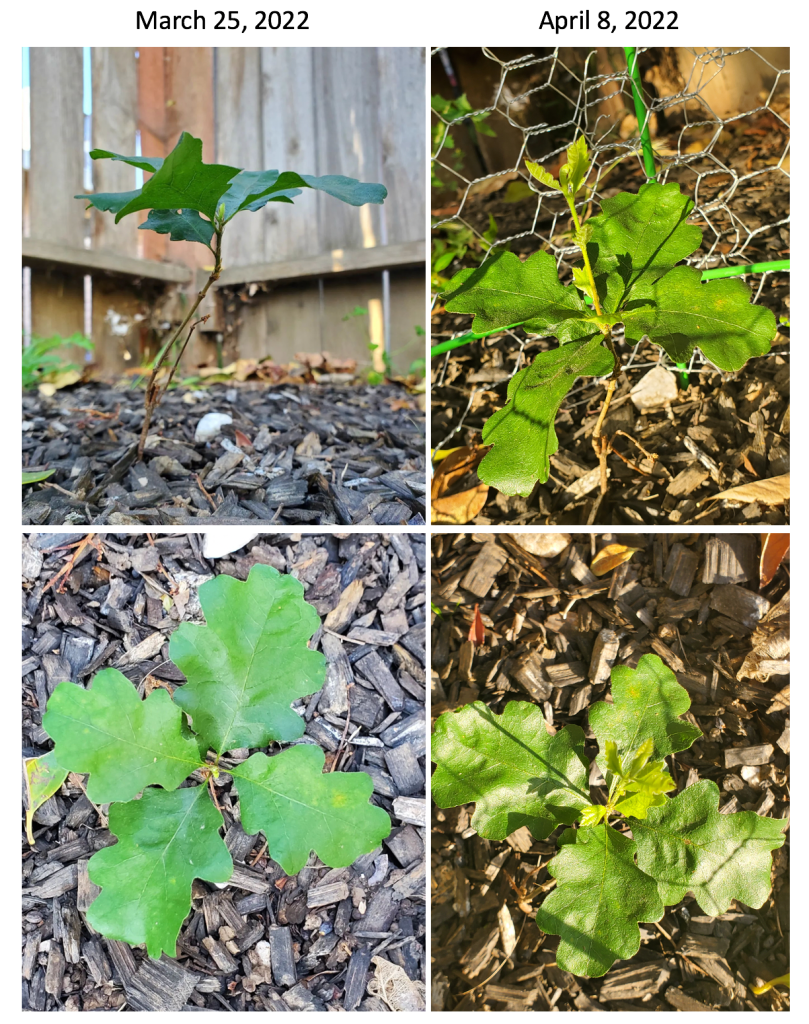It’s spring quarter again, meaning the 2022 cohort of Wild Davis students are starting their timed observations! Students are asked to visit the same urban location (colloquially called a ‘sit spot’) three times throughout the quarter (dawn, mid-day, and dusk) and observe the location for 45 minutes. In past years, my sit spots have included urban natural spaces such as the Wildhorse Agricultural Buffer, the Woodland Regional Park Preserve, and the Ruth Risdon Storer Garden in the UC Davis Arboretum. This year, I’ve chosen the backyard of my new home, as a chance to get to know the wildlife in my neighborhood a little better.

This week’s observations are to occur at dawn, so I arrive in my backyard about 6:10 am. It is chilly, my phone says 54 degrees F and I can just see my breath, so I’ve brought some hot coffee and a blanket. It is still rather dark, though bright enough on the horizon that stars are no longer visible. Despite it not being quite dawn, the mockingbird in my north neighbor’s tree is already awake and calling. I already like this mockingbird a lot as it does a beautiful imitation of a frog that I very much enjoy. My west neighbor feels rather differently – last week when I ate dinner on the patio, the bird was particularly vocal and he came running out of his house waving his hat to scare it off. In classic mockingbird idgaf fashion, it moved only to the north neighbor’s tree and kept screaming.
As dawn progresses, I hear other birds, though none within my yard. Some crows caw and fly over, and a few songbirds join the dawn chorus from throughout the neighborhood. One I recognize as a black capped chickadee, though I have not seen them in my yard yet. In fact, the only birds I’ve seen in my yard are the mockingbird and a scrub jay. I’ve hung two feeders up, and plan to pick up a birdbath soon, in attempt to attract more, though these have not yet been successful.


The remnants of a bird I found in the yard when I moved in suggest the neighborhood cats may be to blame. I have seen two different cats traipse through my yard (despite it being completely surrounded by privacy fence) and I know how effective cats can be at hunting urban wildlife. I will be sorely disappointed if I cannot attract some birds to my new yard. Perhaps they just need some more time to discover the feeders.

As I lament the lack of birds, my mockingbird is joined by another. After several minutes of raucous flights around the north neighbor’s tree, they finally alight on my fence to the east, one cawing angrily at the other. The specifics become clear when they mate on the fence, after which the female (my frog-caller) runs off the male and retreats to the tree. An oblivious scrub jay who lands in the tree a moment later gets the same treatment. I can’t help but chuckle – she is *not* having it today.
My yard is overgrown, and probably needs to be mowed, but I enjoy the feral look. It is an unplanned mix of legit lawn grass, wild barley, and common mallow, which attracts a pleasant variety of insects. I especially like the lady bug I find sleeping in the mallow. Last week, I saw a butterfly alight momentarily on a mallow and wondered if she had lain an egg. Once, I managed to photograph a painted lady laying an egg and they seem to choose curiously dangerous locations. When I look it up after my observation, it seems that various species of mallow are nursery plants for many butterflies. All the more reason to not mow (as if I need another).




In addition to the birds, I wonder at the lack of squirrels. I haven’t seen a single squirrel in Woodland since I moved here. I look them up on iNaturalist and there are less than a dozen squirrel observations in all of Woodland, and none near my neighborhood. Seems odd.
My favorite part of my yard is the volunteer oak tree that has popped up in the northeast corner. I’ve named him Yuukis (pronounced YOU-kees), which is the Mutsun word for “oak”. Mutsun is one of the eight language groups of the Ohlone people, native to the northern coast regions of California. Already, in only the a couple weeks, Yuukis has noticeably grown. I’ve surrounded him with a small chicken wire enclosure to protect him from being trampled or eaten, and I will keep a close eye on him this summer to make sure he survives his first dry season.

As my observation window ends, the neighborhood begins to wake up around me. I hear one neighbor hosing down their backyard, and another’s dog begins to woof softly. The trains pick up as well, and I hear several whistles echoing from the nearby tracks. My last task is to collect photos of three green organisms, to post to iNaturalist for the CNC Sacramento twitter challenge. I choose three plants from my backyard that I have not yet posted iNat: the wild grape along my eastern fence, the orange tree along the western fence, and a stalk of barley from the middle yard. I will upload Yuukis and the insects as well, I especially look forward to tracking Yuukis’ growth throughout the coming years.
This week in class, the students will turn in their observation journals, when I will get to learn what locations they chose and how their morning observations went. I look forward to reading their thoughts and reflections and getting a sense for the sit spots they visited.